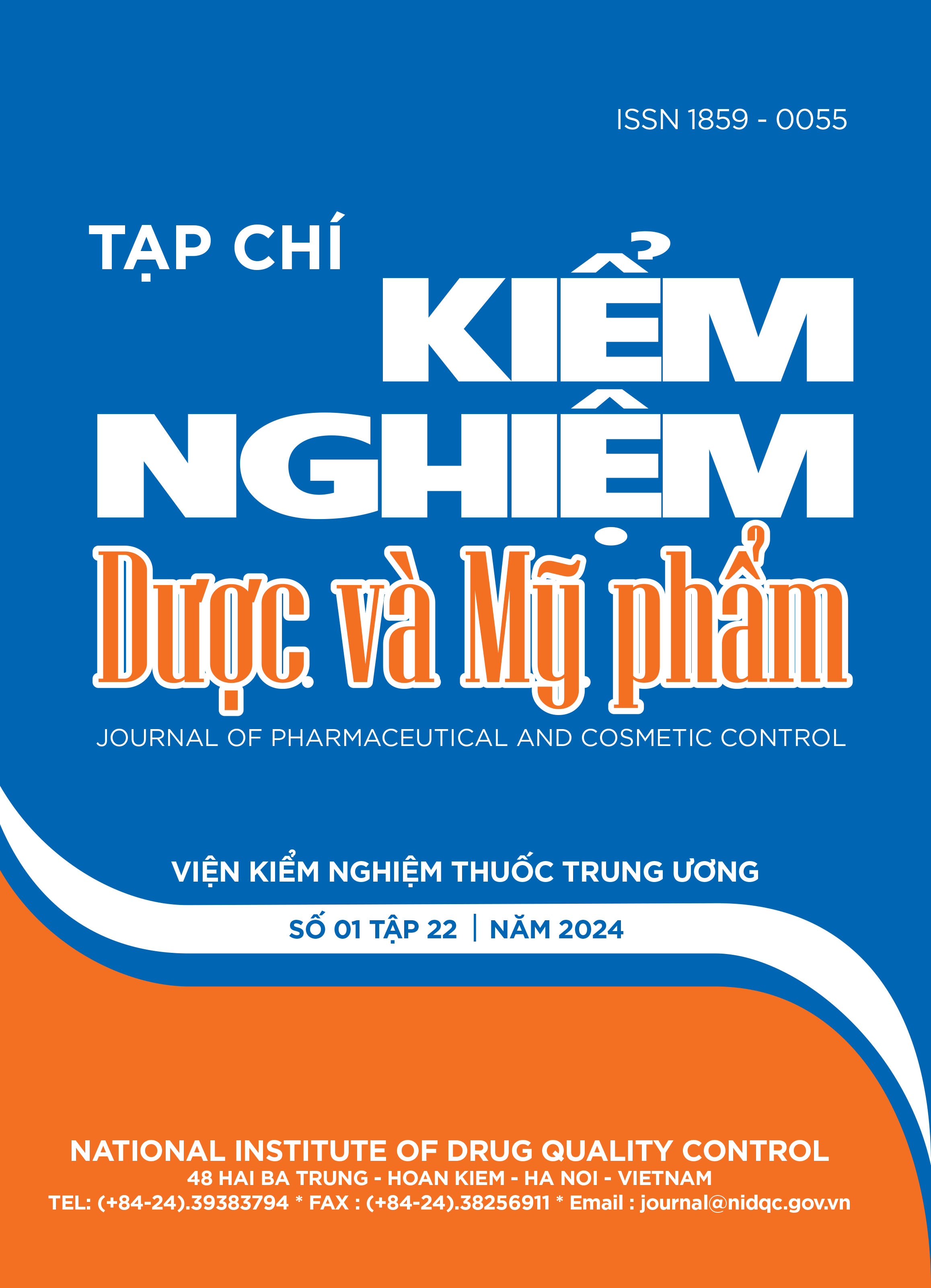Simultaneous determination of adenosine and cordycepin in Cordyceps-containing dietary supplements that are circulated in Vietnam’s market
Main Article Content
Abstract
Cordyceps is a valuable medicinal mushroom genus with multiple health benefits such as improving health, strengthening the immune system, fighting cancer, or supporting the nervous system. Currently Vietnamese Pharmacopoeia does not contain any monograph on Cordyceps. Thus, it is imperative to do research on quantifying quality markers and evaluating the quality of Cordyceps and related products, contributing to post-market surveillance. Referencing to Chinese Pharmacopoeia 2020, this study developed a method to simulteneously determine adenosine and cordycepin. Using ICH and AOAC guidelines, the method was validated for sample matrices including Cordyceps and dietary supplements containing it (solid, liquid, and oily formats). Next, the method was used to analyze 26 samples including Cordyceps and dietary supplements circulated in the market with Cordyceps declarance on their labels. The results show that these products contain adenosine and cordycepin but at various levels.
Article Details
Keywords
Cordyceps, adenosine, cordycepin
References
2. T. P. Moorhouse, A. Elwin, Y. C. Ye, Z. M. Zhou, N. C. D. Cruze, D. W. Macdonald (2021), Beyond the Pharmacopoeia: To what extent is trade for ‘TCM’ limited to official TCM taxa?, Global Ecology and Conservation, 32, e01906.
3. Phan Lê Hiền, Hà Minh Hiển (2019), Nghiên cứu xây dựng quy trình định lượng cordycepin trong đông trùng hạ thảo Cordyceps militaris bằng phương pháp HPLC, Tạp chí Dược học, 59(3), pp. 20–23.
4. Nguyễn Thị Thu Hà, Nguyễn Ngọc Trai, Nguyễn Thiện Thảo (2020), Nghiên cứu quy trình ly trích và xác định hàm lượng adenosine trong cao ethanol của đông trùng hạ thảo (Cordyceps militaris) bằng HPLC-PDA, Tạp chí Công thương, 9, pp. 370–375.
5. Nguyễn Thành Đạt, Nguyễn Thị Hồng Hạnh, Đàm Thị Thu, Nguyễn Văn Hiếu, Lại Thị Phượng, Dương Thế Bắc (2022), Xác định hàm lượng adenosine và cordycepin trong thực phẩm bảo vệ sức khỏe lưu hành trên thị trường Hà Nội, Vietnam Journal of Food Control, 5(2), pp. 390–401.
6. Phạm Văn Hiển, Nguyễn Duy Bắc, Nguyễn Thị Thủy, Vũ Bình Dương (2016), Đánh giá hàm lượng adenosine và cordycepin trong các bộ phận khác nhau của đông trùng hạ thảo nuôi cấy (Cordyceps sinesis (Berk) Sacc) bằng phương pháp HPLC, Tạp chí Dược học, 56(10), pp. 28–31.
7. N. Chernthong, S. Noisakul, A. Saraphanchotiwitthaya, P. Sripalakit (2022), Validation and application of HPLC method for determination of cordycepin and adenosine in dietary supplements, Asia-Pacific Journal of Science and Technology, 27(6), APST-27-06-17.
8. S. Panpraneecharoen, T. Chatrakoon, S. Sansenya, S. Chumanee (2023), Optimization and validation of HPLC/DAD method for the determination of adenosine and cordycepin in cordyceps products, Analytical Science and Technology, 36(4), pp 957–961.
9. Chinese Pharmacopoeia Commission - Ministry of Health (2020), Pharmacopoeia of the People’s Republic of China, People’s Medical Publishing House.
10. AOAC INTERNATIONAL (2023), AOAC Official Methods of Analysis, Oxford University Press.


